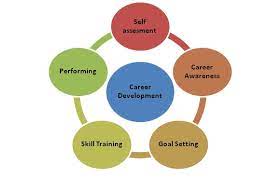Employee engagement is an essential aspect of any successful organization. Engaged employees are more committed to their work, more productive, and more likely to stay with the company. They are also more likely to provide excellent customer service, which leads to higher customer satisfaction and loyalty. But what drives employee engagement? In this article, we will explore the different drivers of employee engagement and how they contribute to creating a thriving and productive workplace.
Contents
Different Employee Engagement Drivers

Employee engagement drivers refer to the factors that influence the level of employee engagement in the workplace. These drivers can vary depending on the organization, industry, and workforce. Here are five different employee engagement drivers:
Leadership and Management
Leadership and management are critical drivers of employee engagement. Effective leaders and managers can create a supportive work environment that fosters engagement, commitment, and performance. Here are some ways in which leadership and management can drive employee engagement:
- Clear Communication: Leaders and managers must communicate the company’s vision, values, and goals clearly to their employees. They must be transparent and open in their communication and provide regular feedback and updates to their team. Clear communication helps employees understand their role in the organization and how their work contributes to the company’s success.
- Supportive Work Culture: Leaders and managers must create a supportive work culture that promotes collaboration, respect, and trust. A positive work culture can help employees feel valued and included, leading to increased engagement and commitment.
- Empowerment: Leaders and managers must empower their employees by giving them autonomy and decision-making power. Empowered employees are more likely to take ownership of their work and feel more engaged and committed to their roles.
- Professional Development: Leaders and managers must provide their employees with professional development opportunities, such as training, mentoring, and coaching. Employees who have opportunities to develop their skills and advance their careers are more likely to feel engaged and committed to their work.
- Recognition and Feedback: Leaders and managers must recognize their employees’ contributions and provide regular feedback on their performance. Positive feedback and recognition can increase employee engagement and motivation.
Workplace Culture and Values
Workplace culture and values are critical drivers of employee engagement. The work environment and values of an organization shape the employees’ behavior, attitude, and motivation toward their work. Here are some ways in which workplace culture and values can drive employee engagement:
- Inclusive Culture: An inclusive work culture promotes diversity, equity, and inclusion in the workplace. Employees who feel valued, respected, and included are more likely to be engaged and committed to their work. Employers who prioritize diversity, equity, and inclusion in their culture and values can increase employee engagement and productivity.
- Clear Values: Clear values can help employees understand the organization’s purpose and mission. When employees understand the organization’s values and how their work aligns with them, they are more likely to feel engaged and committed to their work.
- Positive Work Environment: A positive work environment can improve employee engagement and well-being. Employers who prioritize a healthy work-life balance, mental health, and well-being in their culture and values can create a positive work environment that fosters engagement.
- Trust and Transparency: Employers who prioritize trust and transparency in their culture and values can increase employee engagement. When employees trust their employers and feel that they are transparent in their communication and decision-making, they are more likely to feel engaged and committed to their work.
- Employee Input: Employers who prioritize employee input in their culture and values can improve employee engagement. When employees feel that their opinions are valued and their ideas are heard, they are more likely to feel engaged and committed to their work.
Career Development and Growth Opportunities

Career development and growth opportunities are essential drivers of employee engagement. Employees who have opportunities to develop their skills, advance their careers, and grow within the organization are more likely to feel engaged and committed to their work. Here are some ways in which career development and growth opportunities can drive employee engagement:
- Training and Development Programs: Employers who offer training and development programs to their employees can help them enhance their skills and knowledge. When employees feel that their employers are investing in their professional growth and development, they are more likely to feel engaged and committed to their work.
- Mentoring and Coaching: Mentoring and coaching programs can help employees develop their careers and skills. When employees have access to mentors and coaches who can provide guidance and support, they are more likely to feel engaged and motivated.
- Job Rotation: Employers who offer job rotation opportunities to their employees can help them explore different roles and departments within the organization. Job rotation can help employees develop new skills, gain new experiences, and expand their knowledge. When employees feel that they have opportunities to explore new roles and departments, they are more likely to feel engaged and committed to their work.
- Leadership Development: Leadership development programs can help employees develop leadership skills and prepare them for future leadership roles within the organization. When employees have access to leadership development programs, they are more likely to feel engaged and committed to their work.
- Performance Management: Performance management programs can help employees set goals and track their progress toward achieving them. When employees have a clear understanding of their performance expectations and how their work contributes to the organization’s success, they are more likely to feel engaged and committed to their work.
Recognition and Rewards
Recognition and rewards are essential drivers of employee engagement. When employees feel valued and appreciated for their work, they are more likely to feel engaged and committed to their roles. Here are some ways in which recognition and rewards can drive employee engagement:
- Meaningful Incentives: Employers who offer meaningful incentives, such as bonuses, promotions, and benefits, can motivate employees to perform at their best. When employees feel that their hard work is recognized and rewarded, they are more likely to feel engaged and committed to their work.
- Public Recognition: Public recognition, such as employee of the month awards, can help employees feel appreciated and valued by their colleagues and managers. When employees receive public recognition, they are more likely to feel engaged and motivated.
- Personalized Recognition: Personalized recognition, such as personalized notes or gifts, can help employees feel that their employers care about them as individuals. When employees receive personalized recognition, they are more likely to feel engaged and committed to their work.
- Timely Feedback: Timely feedback on employees’ work can help them understand their performance and how it contributes to the organization’s success. When employees receive timely feedback, they are more likely to feel engaged and motivated to improve their work.
- Career Advancement Opportunities: Employers who offer career advancement opportunities, such as promotions or job transfers, can motivate employees to perform at their best. When employees see that their employers are investing in their career growth and advancement, they are more likely to feel engaged and committed to their work.
Work-Life Balance

Work-life balance is a critical driver of employee engagement. When employees have a healthy balance between their work and personal life, they are more likely to feel engaged, productive, and motivated. Here are some ways in which work-life balance can drive employee engagement:
- Flexible Work Arrangements: Employers who offer flexible work arrangements, such as remote work, flexible schedules, or compressed work weeks, can help employees manage their personal and professional lives effectively. When employees have control over their work schedule, they are more likely to feel engaged and committed to their work.
- Time-Off: Employers who offer generous time-off policies, such as vacation time or paid time off, can help employees recharge and reduce their stress levels. When employees take time off to rest and recharge, they are more likely to feel engaged and motivated when they return to work.
- Family-Friendly Policies: Employers who offer family-friendly policies, such as parental leave or child care support, can help employees balance their work and family responsibilities. When employees feel supported in managing their family responsibilities, they are more likely to feel engaged and committed to their work.
- Health and Wellness Programs: Employers who offer health and wellness programs, such as gym memberships or mental health support, can help employees maintain a healthy work-life balance. When employees feel that their employers prioritize their health and well-being, they are more likely to feel engaged and motivated.
- Clear Expectations: Employers who set clear expectations for employees’ work hours and availability can help them manage their work and personal responsibilities effectively. When employees understand their work expectations and how they align with their responsibilities, they are more likely to feel engaged and committed to their work.
Conclusion
To sum up, the drivers of employee engagement are multi-dimensional and vary from one organization to another. However, the common thread that ties them together is the need to create a supportive, empowering, and inspiring workplace environment that meets the needs of employees. Employers who prioritize engagement as a key performance metric and invest in the drivers that matter to their employees will reap the rewards of increased productivity, innovation, and employee retention.
Employee wellness programs are the key to improving employee motivation, productivity, and retention. At MantraCare, we have a team of health experts, counselors, and coaches who serve corporate employees with 10+ well-being programs including EAP, Employee Diabetes Reversal, Corporate MSK, Employee Fitness, Corporate Yoga, and Employee Meditation.
